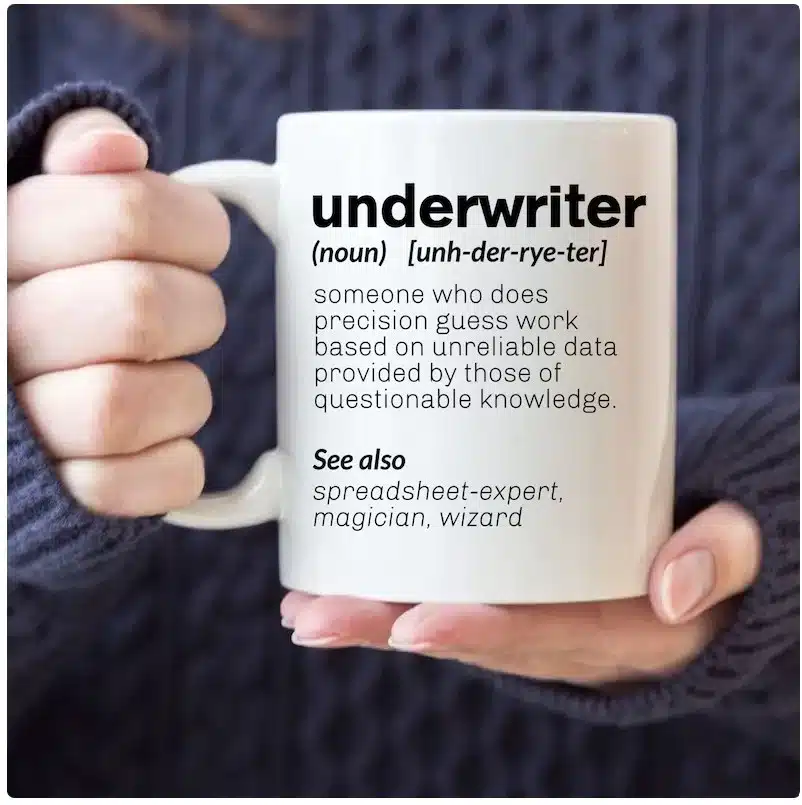Imagine you have a nice portfolio of business making reasonable profits. Covering all expenses, including overheads. The portfolio AP/TP is 1 or greater.
Along comes an opportunity that covers its claim costs, required profit margin, and direct expenses – but only half the overhead expenses.
It’s irrational to fail to write this business. The overheads are fixed (in the short term, at least) and one more bit of business doesn’t increase overhead expenses. So it will improve profitability.
But it has AP/TP ratio below 1. If overheads amount to 6% of premium, its AP/TP is 0.97.
It is valuable at the margin, but not on a standalone, absolute, evaluation. Some insurers evaluate business on this basis, and call the concept “contribution to overheads” (CTO) – here, we would have a CTO of 3% as the business covers 3% part of the 6% overheads.
Suppose we hold this piece of business to this standard: it’s surely not fair to hold the rest of the portfolio to a higher standard. But down this path madness lies: taken to its logical conclusion, we will find we are targeting an AP/TP of 0.97 overall.
Squaring this circle isn’t easy. Should we literally hold different standards for business depending on when they join the portfolio? Is it fair then to propagate these different standards through renewal cycles? Should we have a core/ancillary approach to the portfolio? Should we accept business into the portfolio at a lower profit standard, then expect higher standards at renewal? (This latter is a solution that the UK regulator has banned for personal lines business: it rewards customers who seek the cheapest price each year, constantly being a new customer, at the expense of those whose inertia binds them to one insurer.)
Of course, in the medium term overheads are not fixed. As you grow your business you need more staff to oversee it and you need bigger premises. So perhaps in anticipation you should require a full overhead load to be included in the price. But then that profitable opportunity goes tantalisingly begging…
One could argue that the same argument applies not only in the overhead load but in the cost of capital too. If a proposed deal generates a positive return less than the overall target (say 2.5% return when 12.5% is the target) one could again argue that the short run effect despite profit shortfall is to improve performance. The parallel to the argument “overheads are fixed in the short term” would be “capital is fixed in the short term”.
But I think this is much more dubious. While actual balance-sheet capital is fixed in the short run, risk-based capital is not, and such business will dilute returns on risk-based capital. This is a metric that is closely monitored (at least by proxy: solvency capital ratios are routinely reported). Best to avoid this approach.
A really smart insurer would include an articulation of its approach to these subtle challenges within its overall pricing strategy. I must confess I haven’t often seen this done! I think pricing is generally too rough-and-tumble in practice to address these kinds of refined strategic points.













